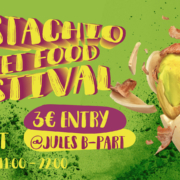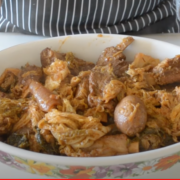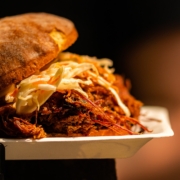8 Italian foods which are very hard to translate into English
Written by Arnaldo Pangia
Italy is one of the most biodiverse territories in Europe, and that includes both in terms of flora and fauna.
That’s why you don’t have to doubt your translator’s skills whenever you’re having a hard time translating traditional ingredients or dishes: truth is we Italians are referring to endemic species that simply do not exist abroad.
Sometimes the way Italian food are prepared in a very specific way for which there is an Italian word, but not necessarily an English one, other times the ingredients used in our traditional recipes are just unusual to non italian speakers.
This article provides a small collection of Italian food which are difficult to render into English as well as some handy solutions which will convey the message through for our non italian speaking friends.
1. Radicchio
People often erroneously translate radicchio (pronounced: rah-dee-kyo) with the English term radish. Turns out radish is the English word for ravanello! Be careful what you say, friends! Radicchio is actually a juicy magenta-coloured bitter chicory endemic to the area of Treviso.
Radicchio has a pleasant bitter and gently spicy flavour which becomes more delicate when grilled.
A correct solution for a translation would be just leaving the word radicchio altogether and adding the explanation “Italian red chicory”
2. Friarielli
Fun fact: friariello is not even a word which belongs to standard Italian, as it is a regional variation from Campania (the region where Naples is located).
There are several ways to refer to friariello, such as broccoletti in Rome, cime di rapa in Apulia (by all means, you should try the traditional orecchiette with cime di rapa. Totes delic).
Don’t even try to translate friarielli with broccoli. It just wouldn’t work and, on the contrary, it would confuse english-speaking people.
Try with broccoli raab or broccoli rab, instead.
3. Arrosticini
Have you ever heard of arrosticini? It is a delicacy from the mountainy region of Abruzzo. The concept lying behind the arrosticini is quite simple, as arrosticini are nothing but a thin skewer of mutton meat. Interestingly enough, its simplicity is also the reason why this dish is so loved when picnicing. Just bring your raw arrosticini, set up a fornacella, which is a long and narrow barbecue set, light up the embers and make the most out of your barbecuing skills!
I believe that translating arrosticini as simple skewers would not do justice to the authenticity of the dish. What you might want to do is just use the proper name and describe what it is about, e.g. arrosticini, castrated mutton skewers.
4. Caciocavallo
The region I am from is famous for its caciocavallo, a typical type of cheese. What is funny about caciocavallo, though, is its name. For those of you who speak Italian, cacio is the old-fashioned way to say cheese and cavallo is the Italian word for horse.
Oh my, oh my, is caciocavallo made out of mare milk? Or even worse, is caciocavallo made out of horse meat?!
Rest assured, caciocavallo is a drop-shaped type of cheese which is tied in pairs and hung on a rod to season.
Where does the horse come from, then?
In Italian a cavallo literally means on a horse, but it is also used as an expression which means riding. Interestingly when Italian speakers say they’re on a horse of their bikes what they really mean is that they are riding their bike.
As we mentioned earlier on, the cheese is tied in pairs and hung on a pole, as if it was riding the pole itself… or, as an Italian speaker would say, as if it was on the horse of the pole! Thus the name Cacio a cavallo (literally, cheese on the horse), which later became Caciocavallo.
To make it a long story short, how on earth should we translate Caciocavallo in English? Do everyone a favour and just write Caciocavallo. If you feel like it you can explain the whole story to your English speaking friend, but, hey… things might get complicated. You have been warned.
5. Polenta
Polenta is a staple of northern Italian cuisine. You should definitely try it if you already haven’t: it’s delicious and it comes in many varieties.
Polenta is basically a kind of corn porridge used as a main dish in addition to sausages or meat or tomato sauce or melted cheese or other kind of Italian goodies. The interesting thing about Polenta is that you can have it as porridge or grilled in a slice… or even fried! (everything can be fried if you’re brave enough, am I right?).
How are we supposed to translate Polenta, then? I would stick to the solution of keeping the original name and adding a small description.
Polenta, corn porridge.
6. Guanciale
Guanciale is the main ingredient of the pasta alla carbonara. What? Did you think you could cook carbonara with diced bacon? Woah, watch your mouth there, kiddo.
Guanciale is nothing but pork cheek. It’s as simple as that. Add it to whipped eggs, pepper and some grated pecorino cheese and you’re going to have the time of your life with a traditional-style carbonara.
So, how do we translate guanciale in English? Quite simply: pork cheek or pork jowl. Maybe you meant guanciale a cubetti? Then stick with diced pork cheek or diced pork jowl.
You’re welcome.
7. Amaro
Amaro is the Italian word for bitter, and it typically refers to some herb liquor which is offered after a meal in addition or in alternative to a desert and or a cup of espresso. I bumped into some menus in Italy where the term Amaro was translated as bitter, which is technically true, but it doesn’t make sense to a non-italian speaker. Moreover, there are hundreds of different amaro in Italy! Does it mean that there are many different kinds of bitters? Nope.
Of course the best course of action would be leaving the word amaro in Italian. If you want to trade the tradition for clarity, I suggest to translate as either herbal liquor or, even more clearly, digestive herbal liquor.
8. Porchetta
How to describe porchetta? That’s a tough one. Try to think of your sweetest childhood memory. Remember that time Santa brought you that toy you wanted so badly and then you spent the whole Christmas playing and having chocolate? Okay, take that memory and multiply it by one hundred.
Congratulations, you managed to imagine a tenth of how delicious Porchetta is.
Jokes aside, Porchetta is made by deboning and cleaning a pig of its entrails and stuffind it with rosemary, almonds, garlic, fennel and other herbs and letting it roast for over 8 hours. As a result, Porchetta meat is tender and moist and its skin is crispy and savory.
Porchetta can be consumed either cold or lukewarm, in a sandwich or simply in a dish.
How to translate Porchetta, then? I am afraid we’re in a pickle here. We could just dismiss this issue by translating the Porchetta as roasted pork, but there is much more than that. Once again, let’s leave the Italian name and add the extra explanation traditional Italian roasted pork.
9. Dorate e fritte
There’s a saying in Rome, which goes pretty much like this: “Even shoes can be delicious if you deep dry them”.
How can you argue with that? Italian people (specifically people from the South) love their fried food. Needless to say, there are a lot of ways to fry the Italian way, one of which is to dorare e friggere, which can be literally translated as golden and fry. Dorare e friggere is crucial to prepare the original parmigiana di melanzane, where every single slice of aubergine should be dipped in beaten eggs and in flour and THEN deep fried. This is what dorare e friggere is all about.
How do you translate dorate e fritte? Oh my, that’s hard. When in doubt, leave it out. Another option is to leave the dorate e fritte in addition to the name of the dish, e.g. dorate e fritte fried aubergines (aubergines dipped in egg, flour and deep fried).
It’s not easy to translate, but it’s very easy to eat.
10. Affettati
It’s not that difficult to be honest. In Italian affettati are prosciutto, ham, salami, bologna… yep. Cold cuts or, cured meat. That was easy, right?
I know, I know. The point is I have been browsing hundreds of Italian menus in my life and I bumped into some silly translations I won’t mention here.
Last but not least, I suggest not to translate prosciutto crudo with raw ham. Stick to prosciutto! English speaking people are now familiar with what prosciutto is.
Are you happy with this list or do you think we could have done better than this?
Let us know on our Facebook page and share with us your adventures with translating or mistranslating Italian food!












Leave a Reply
Want to join the discussion?Feel free to contribute!